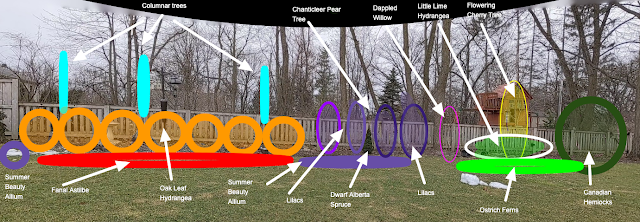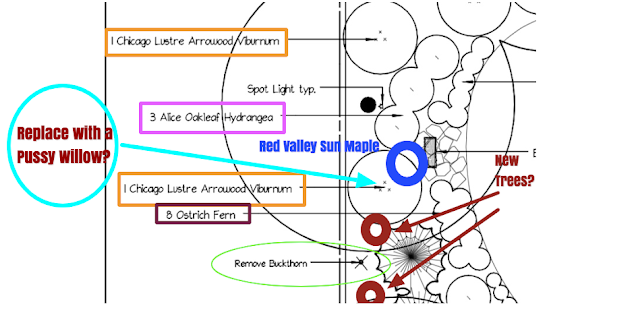Backyard Priority Project #2: Hornbeam/Oak Gap Filling

A couple of days ago, I discussed that I'm very susceptible to 'plant lust' and 'tree lust' once the Winter thaw breaks and Home Depot and Menards start to put out their nursery stock. The traps there are well-established. First, buying stuff and then trying to 'figure out where to put it' is not a good approach. Not to mention that the Big Box stores tend to feature A LOT of Spring/early Summer flowering items (so we are naturally drawn to them!) and if you plant what they have in stock and on sale, you often-times end up with a NON-four-season garden. You get a lot of show in say...Spring. But, you have a boring Summer and Fall (and even Winter) garden. Because we had a professional do our plan, I just need to stick to it. And not stray too far. Unlike years past, I'm going into this season of plant buying with a FIRM plan. That means focusing on three areas - maybe two and a half areas - for enhancing the view from our patio. The fir





